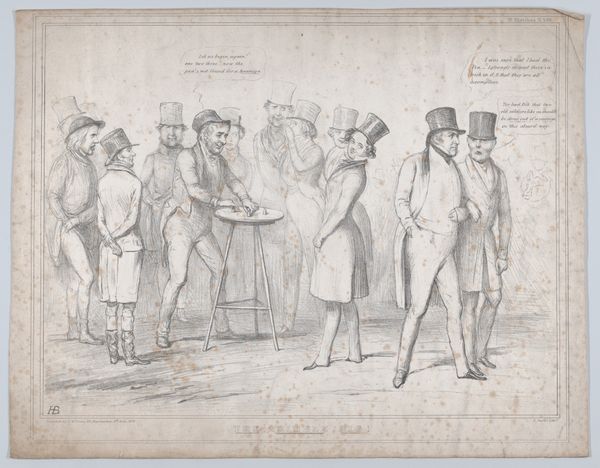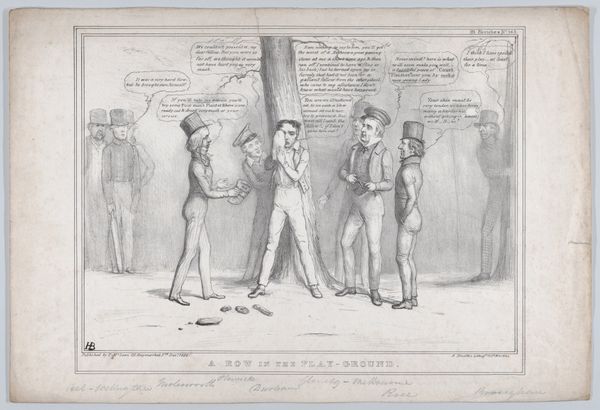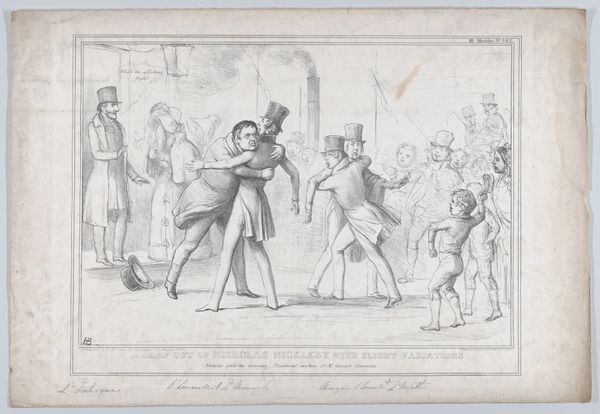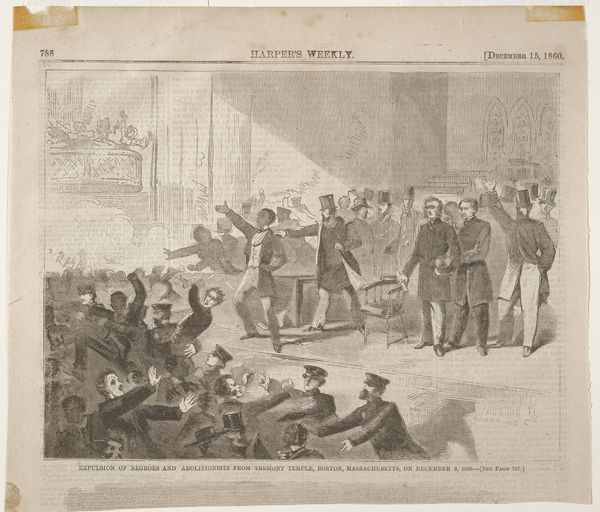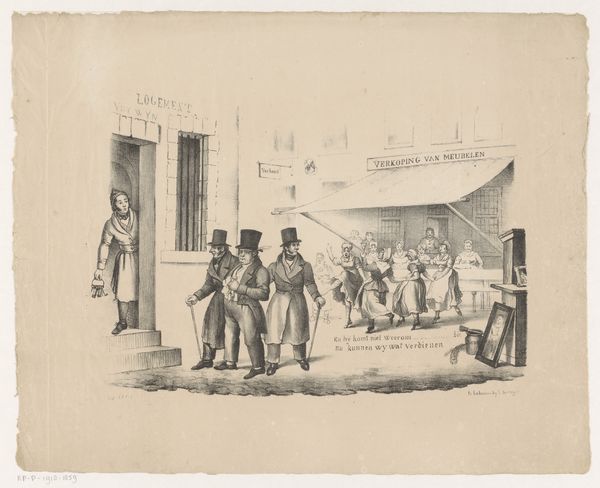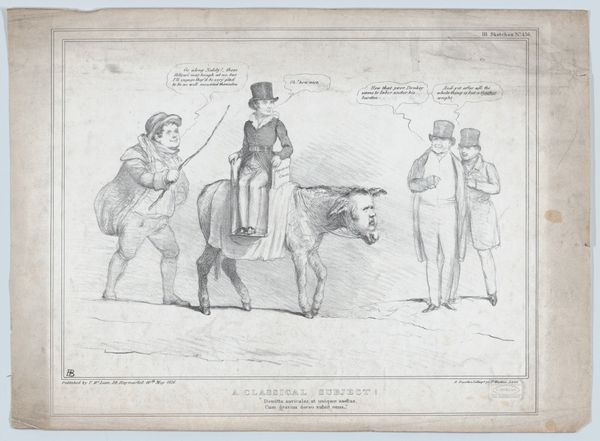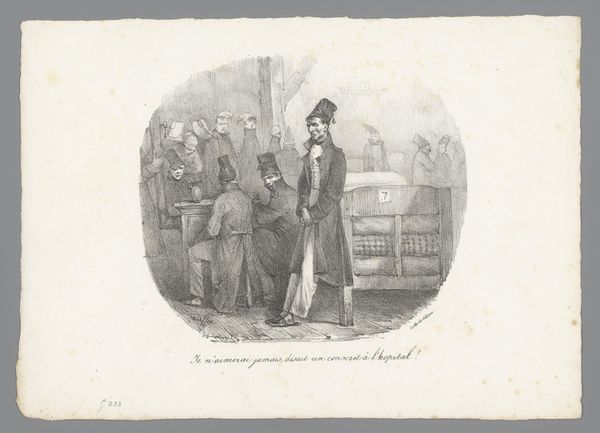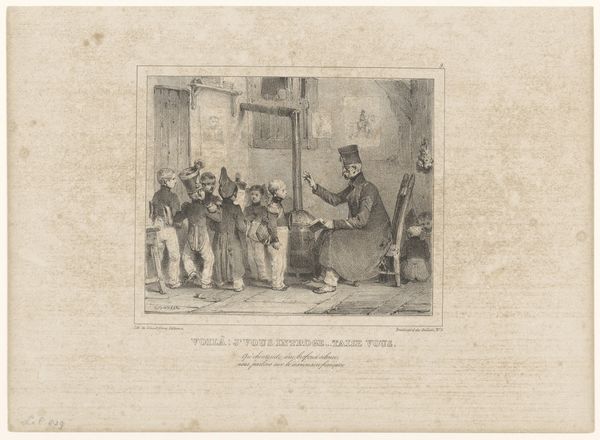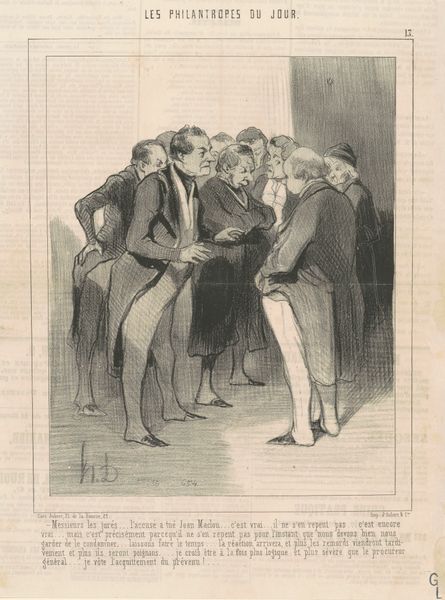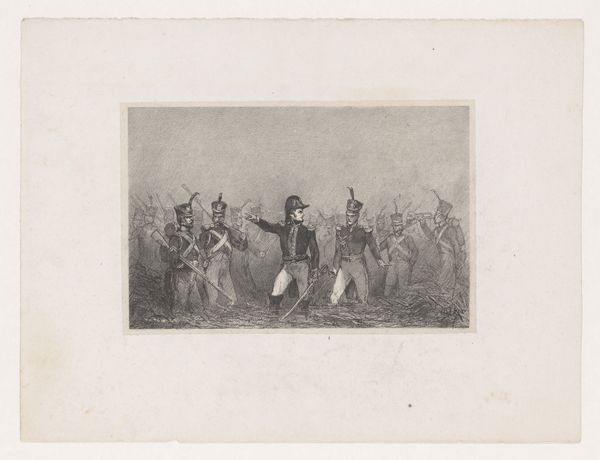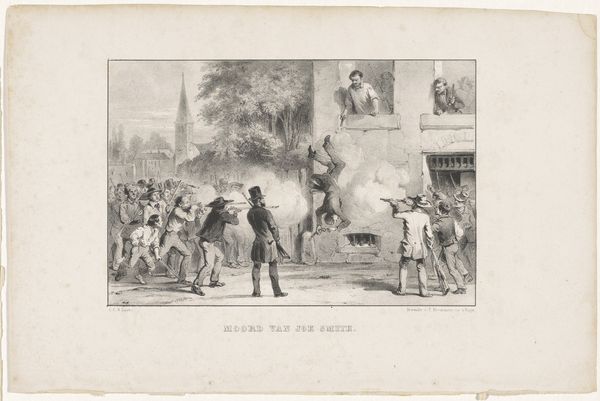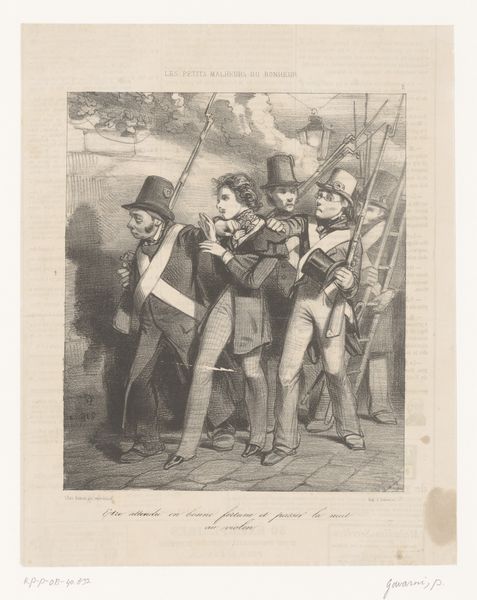
drawing, coloured-pencil, print, etching, intaglio
#
drawing
#
coloured-pencil
# print
#
etching
#
caricature
#
intaglio
#
coloured pencil
#
romanticism
#
genre-painting
Dimensions: Sheet: 11 11/16 × 16 15/16 in. (29.7 × 43 cm)
Copyright: Public Domain
Curator: This is “Dispersion of the Thimble Rig,” an etching with coloured pencil by John Doyle, dating to 1834. It currently resides at the Metropolitan Museum of Art. Editor: My first thought is how wonderfully compact the composition is, despite depicting so many figures. They're tightly packed, yet each has distinct clothing, posture...it lends the scene a frenetic energy. What do you think the social context surrounding such a piece would be? Curator: This work offers a sharp critique of societal behaviors. It speaks to a moment in time riddled with anxieties surrounding gambling, deception and moral corruption, likely referencing the then common street swindle of thimble rigging. Doyle wasn’t afraid to depict and, in effect, denounce it. Editor: From my perspective, I’m struck by the artistic choices here. Why etching specifically, and how does the integration of colored pencil impact our understanding of its production, as well as reception? Curator: Doyle opted for etching to facilitate reproduction and mass distribution, allowing a broader audience to engage with his commentary on societal ills. The delicate addition of colored pencil suggests a desire to elevate it from a simple news print to something of higher craft and artistic value, a collectable. Think of it as a blend of production strategies – a move aimed at widening circulation without relinquishing traditional art associations. Editor: And the characters themselves seem drawn in such caricature style that their class is emphasized. The material used must be cost-effective yet precise. Was there commentary at the time related to accessibility of materials for prints like these? Curator: Access to etching materials was certainly easier than to oil paints, which gave rise to more and more affordable works. Doyle carefully considered how his prints would function in public discourse, choosing methods to maximize their impact within social contexts. Editor: So, in essence, we have an object intended for a certain level of consumption, but it also exists as social commentary, reaching audiences across many class levels and ultimately contributing to a wider dialogue about the times. Curator: Exactly! And through the clever deployment of these techniques Doyle allows us today to understand a tangible component of sociopolitical anxiety during that historical moment. Editor: A really insightful look, then, at art's interplay between access, craft, and historical forces. Curator: Indeed, a testament to how artistic production methods reveal intricate facets of public culture.
Comments
No comments
Be the first to comment and join the conversation on the ultimate creative platform.
